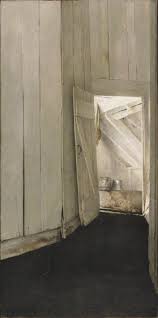“Modernism wasn’t just a style—it was a way of thinking, a way of life,” expounds Jessica Todd Smith in a video on the Philadelphia Museum of Art website. Smith, who is the curator of the current PMA show, “Modern Times: American Art 1910-1950” (on view until September 3), also refers to the “beautiful chaos of innovation.” Those four decades were, indeed, chaotic: two world wars, the Soviet revolution, the Great Depression, social upheavals, the emergence of mass production and the consumer society. Where did this stormy time leave the artist? Adrift, judging from this show. Museums don’t pipe-in music (except in the gift shop), but if they did Cole Porter’s “Anything Goes” (from a 1932 musical of the same name) would be perfect. Innovation was the order of the day: Calder’s wire mobiles, O’Keefe’s enlarged lilies, Pollock’s frenetic daubing. “The world’s gone mad today. And good’s bad today.” It’s a relief to come across Horace Pippin’s calm portrait of Christian Brinton (1940), a supportive art critic. Calm, too, are Edward Hopper’s studies for his etching, American Landscape (1920). The work of photographers tends to be likewise distinctly un-frenetic, perhaps because shooting (especially with a large format camera), developing, and printing, require unruffled concentration. I particularly liked Paul Strand’s famous Wall Street, New York (1915). But the calmest work to me was a small (13” x 25”) tempura panel, Andrew Wyeth’s Cooling Shed. Painted in 1953, it barely makes the cut in more ways than one. “If modernism is a way of life, I will have none of it,” the little painting seems to say.


